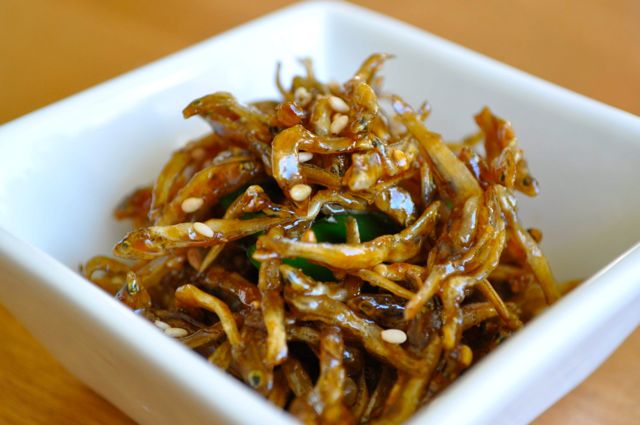
I am best known for my Myulchi or Myoelchi Bokkeum among my friends and family. This Korean anchovy side dish is probably one of the dish I make the most. So I’m not sure why I haven’t posted this before…I guess I really didn’t think that it was anything special..but then recently eating at a restaurant, I realized how the taste can vary from the ones that are really bland, to the ones that have the perfect balance of salty and sweet and then the ones that are just overloaded with spice and garlic – making it hard for you to really taste the anchovy at all. Also in terms of texture, it can be too wet and mushy or too hard and gummy – missing the perfectly chewy and crispy range in the middle. Of course, there is the wet version (Jorim) which is supposed to be very soft but we are talking about the dry version here which is called bokkeum (볶음) and that is all about having the right amount of crispness without it being too hard.
Nutrition: Because you eat these anchovies whole including the bones, they are loaded in calcium. My husband says that this is how he was able to grow tall even though he hardly drank any milk while growing up. Myulchi or Korean dried anchovies are also a good source of DHA which is an important nutrient for the brain. So you can see that myulchi bokkeum is really one of the most nutritious lunchbox (doshirak) banchan you can make for your child. And most likely, your child will love the taste of it, so give this a try!
Servings: 3-4 Cooking Time: 15 min Difficulty: Easy
Ingredients
- 1 C small dried anchovies for stir fry (볶음 bokkeum)
- 1 T vegetable oil
- 1 pc of ginger slice (1/4 in thick)
- 2 shishito/green chili peppers (optional)
- for the glaze
- 1 T soy sauce
- 1 T sugar
- 1 T sake or rice wine
- 1 tsp water
- sesame seeds
- 1/8 tsp garlic powder
- 1 tsp maple syrup or rice syrup or malt syrup
- 1/4 tsp sesame oil
Directions
1. Try to buy good quality dried anchovies (마른 멸치 maleun myulchi or myeolchi). They should not be too dry (it should still be somewhat soft and not hard). If the anchovies are really dry it means it’s too old. The best way to judge the quality is to taste them – they should be still soft, chewy and taste not too salty but meaty and even a bit sweet. Here’s a pic of some good quality myulchi and their varying sizes. All these three sizes are good for making myulchi bokkeum.
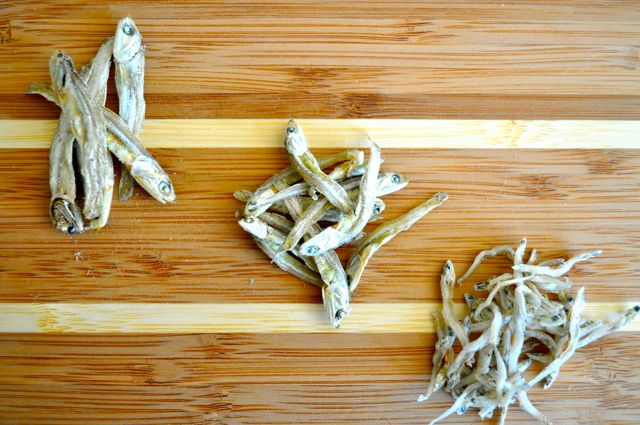
Anything bigger, it is really not fit to be eaten whole since the innards taste quite bitter. Some people may even say that the bigger size at top left is too big. But if you take off the head along with the gut from the anchovy, you can enjoy a more meaty mulychi bokkeum. To learn more about this wonderful dried fish, you can read more HERE.
Below is a photo that shows how you can take out the gut and the head – hold the head with one hand and twist it off gently and most likely the gut will come off with the head.
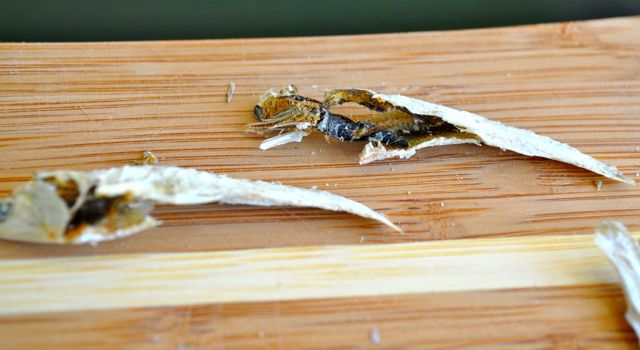
2. Prepare the glaze – in a bowl, add soy sauce, sugar, sake, water, garlic powder and sesame seeds. Set aside. Cut shishito peppers into bite size pieces.
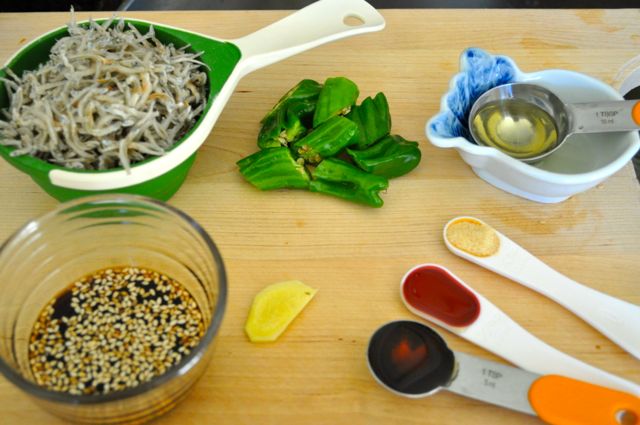
3. On medium high heat and brown ginger in oil (2 min or so) until brown. The essence of ginger will get infused into the oil which will take away any fishy smell from the anchovies.
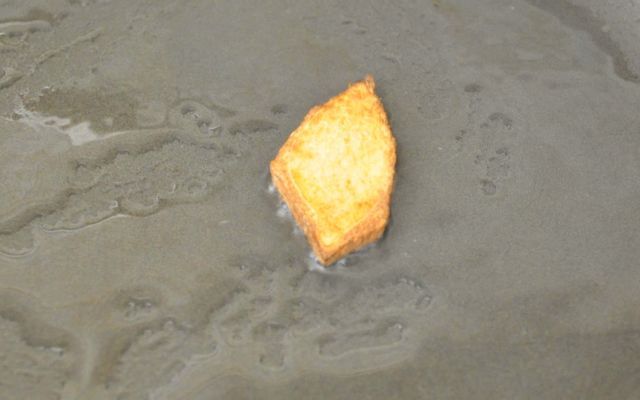
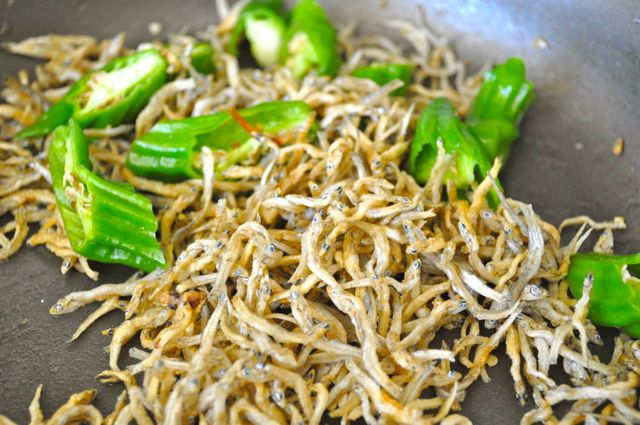
4. Add dried anchovies and sliced peppers to hot ginger oil and saute for 3-4 minutes until they are slightly browned. This step is very important. Make sure you saute enough until the anchovies are well browned before going to the next step.
5. Lower heat and add soy sauce glaze to pan. Stir for about 2 min. until anchovies are evenly glazed with the sauce. Drizzle maple syrup and stir for another 1 – 2 min until anchovies are well coated and has a sheen to them. Turn off the heat. Finish the dish by drizzling some sesame oil.
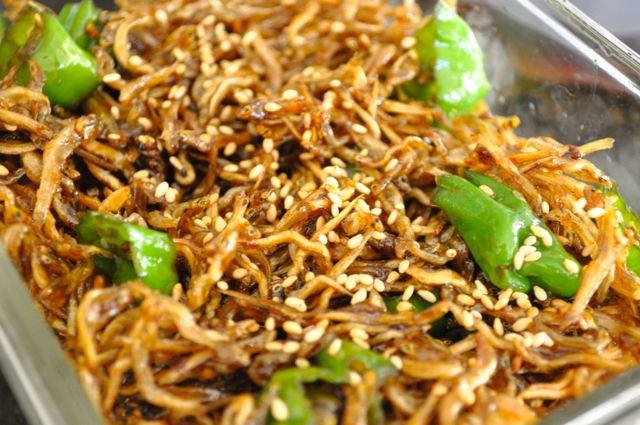
Myeolchi Bokkeum (Soy Maple Glazed Anchovies)
Ingredients
- 1 Cup small dried anchovies for stir fry (볶음 bokkeum)
- 1 Tbsp vegetable oil
- 1 piece ginger slice (1/4 in thick)
- 2 shishito/green chili peppers (optional)
for the glaze
- 1 Tbsp soy sauce
- 1 Tbsp sugar
- 1 Tbsp sake or rice wine
- 1 tsp water
- 1/8 tsp garlic powder
- 1 tsp maple syrup (or rice syrup)
- 1/4 tsp sesame oil
- sesame seeds
Instructions
- Try to buy good quality dried anchovies (마른 멸치 maleun myulchi or myeolchi). They should not be too dry (it should still be somewhat soft and not hard). If the anchovies are really dry it means it's too old. The best way to judge the quality is to taste them - they should be still soft, chewy and taste not too salty but meaty and even a bit sweet. See my post for more info and pics on best kind of myeolchi to use.
- Prepare the glaze - in a bowl, add soy sauce, sugar, sake, water, and sesame seeds. Set aside. Cut shishito peppers into bite size pieces.
- On medium high heat and brown ginger in oil (2 min or so) until brown. The essence of ginger will get infused into the oil which will take away any fishy smell from the anchovies.
- Add dried anchovies and sliced peppers to the hot ginger oil and saute for 3-4 minutes until they are slightly browned. This step is very important. Make sure you sauté enough until the anchovies are well browned before going to the next step.
- Lower heat and add soy sauce glaze to pan. Stir for about 2 min. until anchovies are evenly glazed with the sauce. Drizzle maple syrup and stir for another 1 - 2 min until anchovies are well coated and has a sheen to them. Turn off heat. Finish by drizzling some sesame oil.
Nutrition Information:
Serving Suggestions
Myulchi Bokkeum is really one of the most basic banchan or side dish in a classic Korean meal. This dried anchovy side dish is a great item in children’s lunchboxes and also in ssam (try this instead of pike mackerel or bulgogi in a ssam). Also great with various soups – both spicy and savory/mild flavors.
Storage
Most markets will store these in the fridge but it tastes best when it is kept at room temperature. It will stay fresh for days to even a week at room temperature due to its salt and sugar content.
Variations
Make a spicier version by reducing soy sauce to 1/2 T and adding 1/2 ~ 1 T gochujang. The recent trend is to add nuts such as walnuts, sliced almonds and peanuts when making myulchi bokkeum so it’s something worth trying if you like nuts.
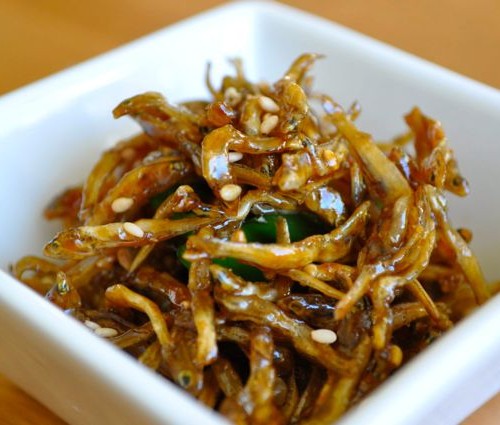
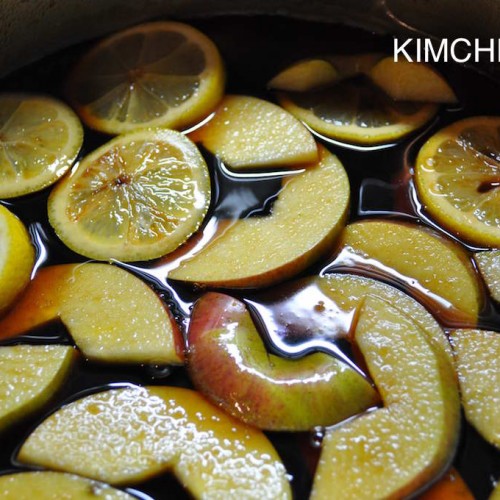
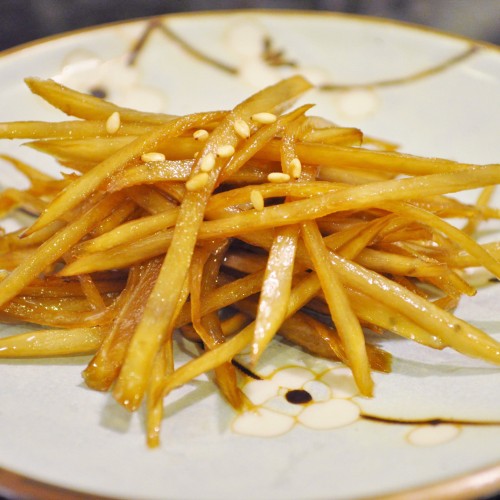
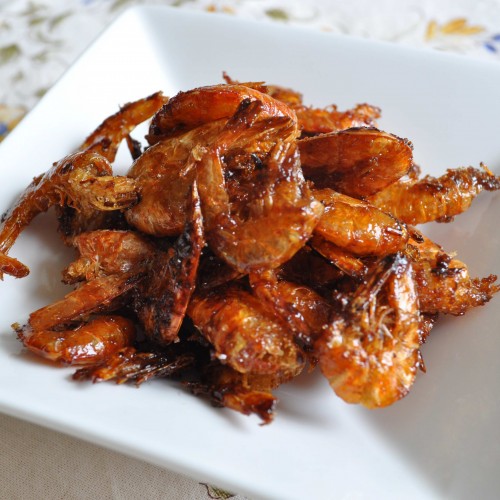
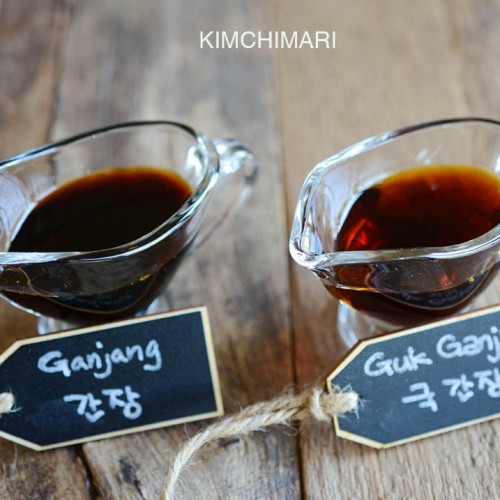
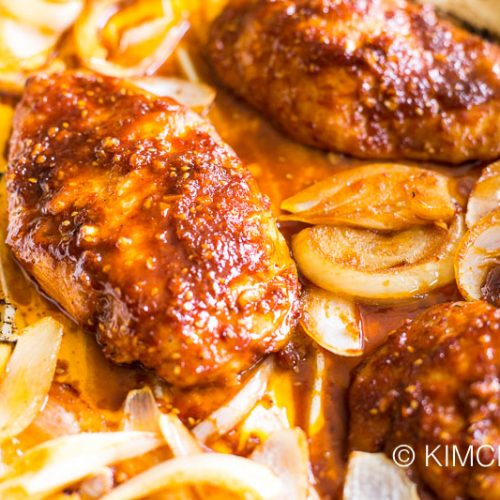
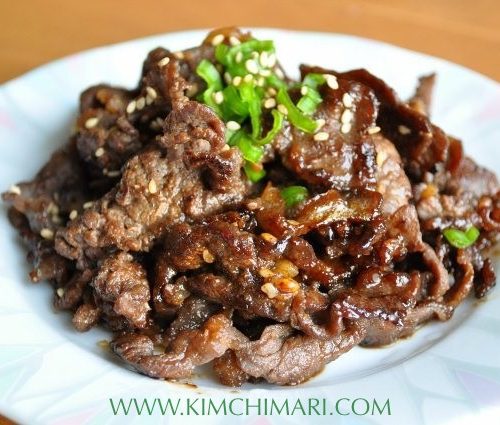
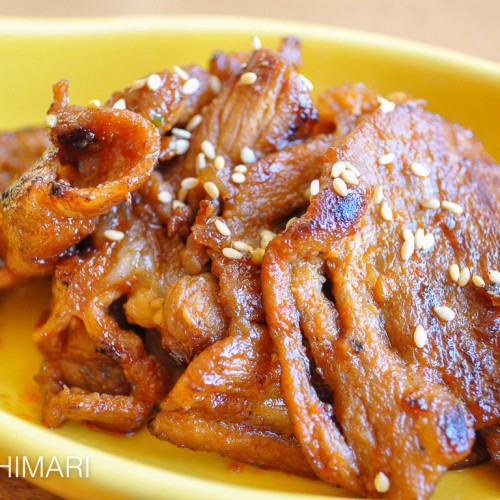
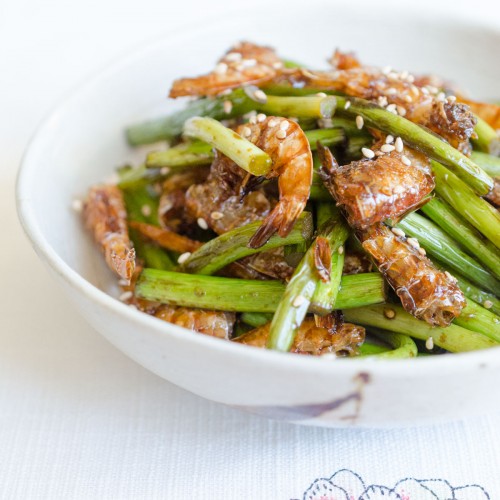
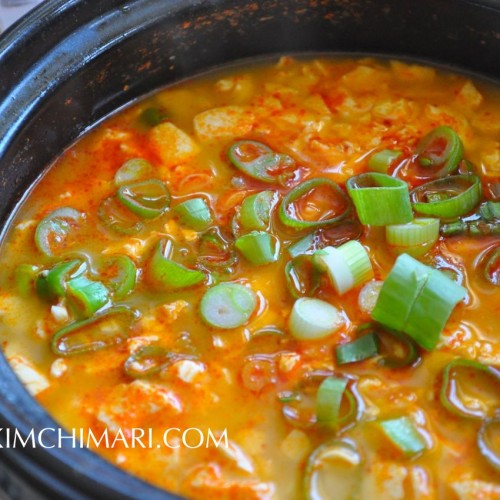
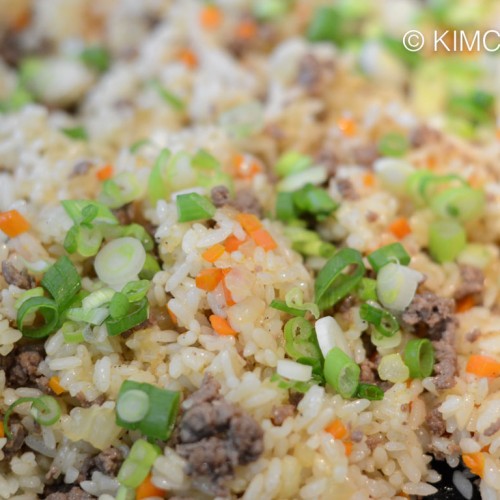
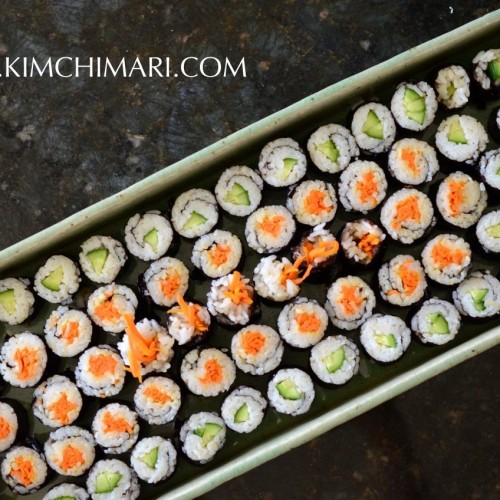
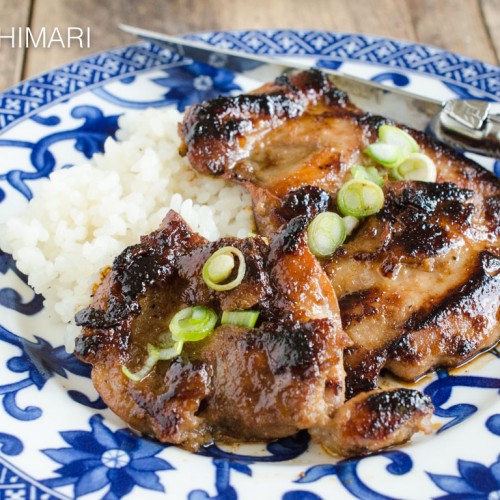
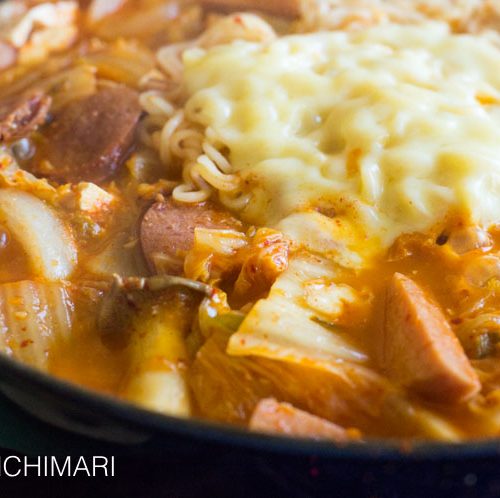
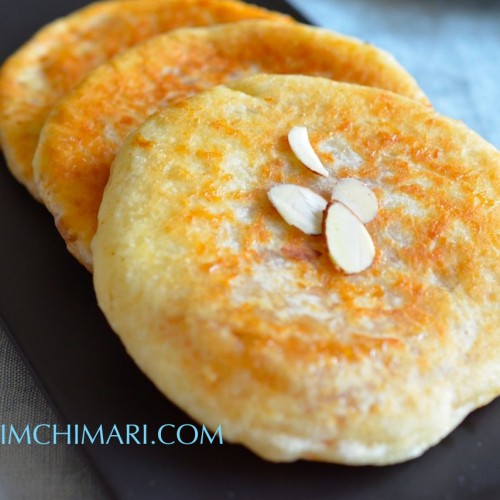






I remember the first time I had this dish when I was teaching at an elementary school in Suwon. At first I thought I was eating some sort of noodle and I was wondering what kind of noodles they were because they were just so darn tasty! Then upon closer inspection, I noticed the eyes and realized they were tiny little fish. I gobbled them up (and maybe went back for seconds if there were any left after all the teachers had eaten). Thanks for posting this recipe! I am going to give it a try! I bet it will be fantastic!
Oh you are so welcome!! Yes, I really hope you try it! My sisters and mom all tell me my myulchi bokkeum is the best!~ Cheers!
I’m just starting to get into Korean food.. and this banchan is my favourite, by far! Thanks so much for sharing such a detailed recipe.. very easy for a beginner in Korean cooking to follow. 😉
Hi! Soo good to hear that! Sometimes I worry that I write too detailed instructions..glad it was helpful. Let me know if you have any questions – thank you so much.
Certainly I will, once I find a spare minute. Or two.
There are some posts in English on our blog as well, but mostly about Korean entertainment, rather than food. My wife also wrote something about abalone when she cooked it. In English AND in Polish 😉
It was in Korea when we had a chance to try it first in rice poridge, then raw at Jagalchi Market. All after watching those brave women divers on National Geographic 😉
Oh, take your time! I will definitely check out the English posts. Yes, the women divers are really something else aren’t they? Thank you so much!
Your recipe was an inspiration for our attempts.
First weeks in Korea, armed with your knowledge and we still love them 🙂
Thank you! So happy to hear that my recipe was an inspiration to you. I wish I can understand your blog.. 🙁 But I certainly love your picture and I applaud you for trying out unfamiliar foods!!
Not so unfamiliar as one may think 🙂 We have kind of kimchi(sauerkraut)-minus chilie, we cook samgyetang, we eat hoe, our gogi mandu taste exactly the same.
The idea to write a blog in our language was that there is a lot of stuff online in English, but very little in Polish.
And I’m more than happy to translate it for you, if you find our point of view interesting 🙂
Oh, I LOVE sauerkraut! And to write a blog in Polish is such a great idea! So I was wondering if it was Polish. One of my best friend in middle school was Polish… And you are so kind – I would love to read (if you have time) maybe one or two of your post (maybe on myeolchi while we are at it). I always find foreigner’s view of Korean food so very interesting. 🙂 Thanks so much!
Yum! 🙂 Thank you for the recipe!! 🙂
You are very welcome! And thank you for stopping by~ 😉
Hi! What alternative is possible if I don’t use ‘sake’? Is it okay if I don’t put it ? Will the taste change?
Oh, so there’s a slight possibility that your anchovies may taste a little fishy but if it’s sufficiently sauteed in oil with ginger BEFORE sauce is added, it should be fine. Just add water instead of sake. Maybe a little more sugar if you want since cooking sake is kinda sweet. Good luck!